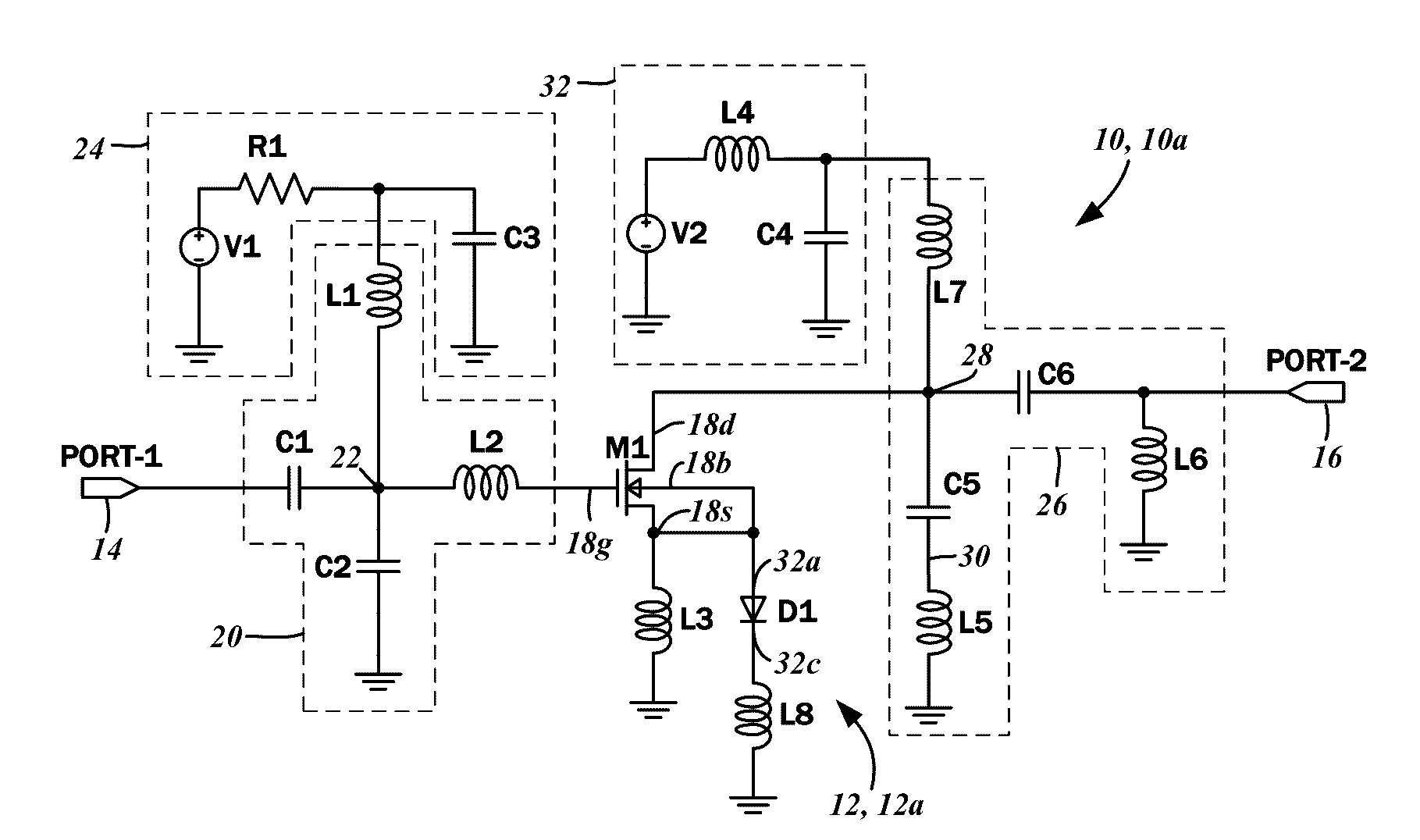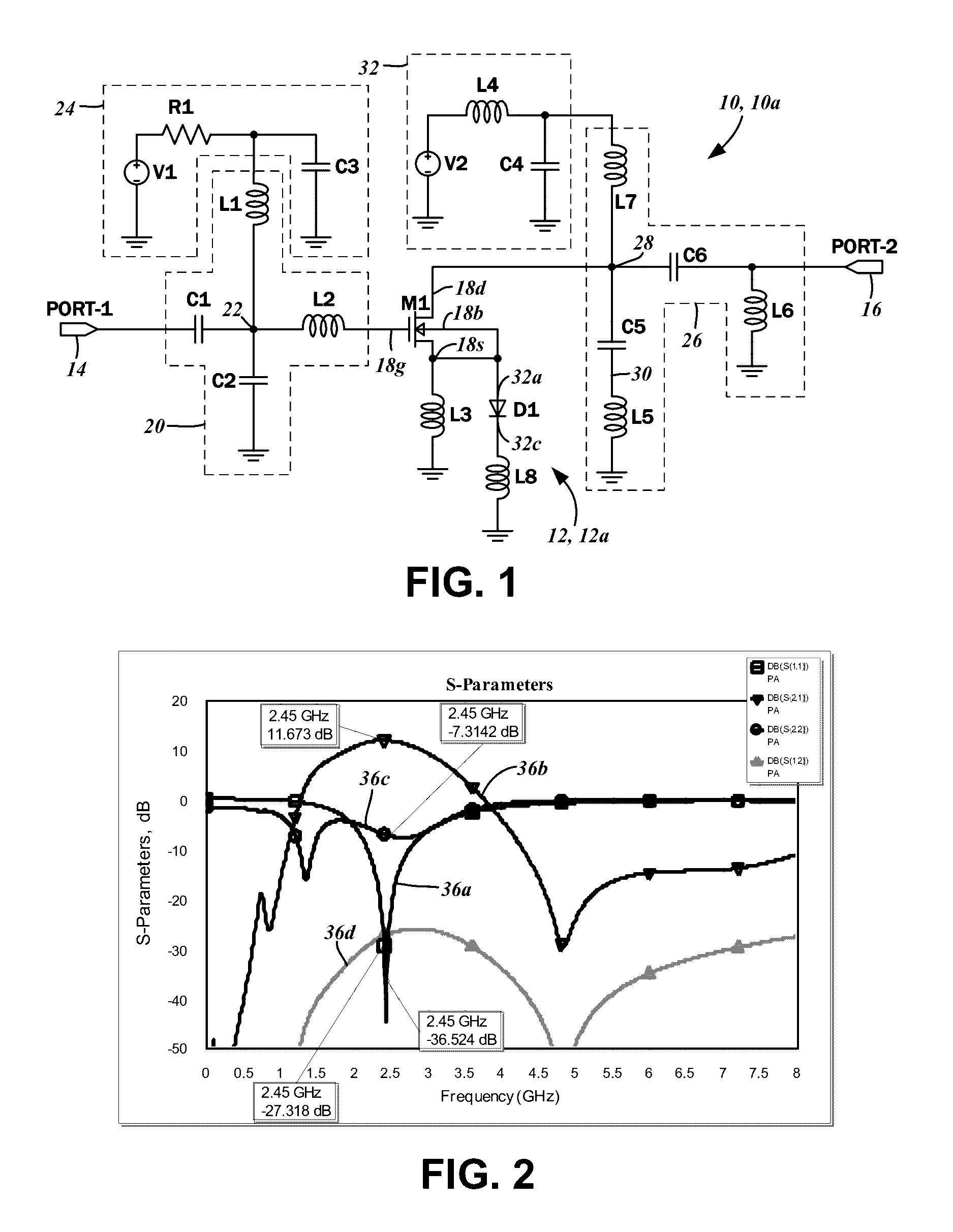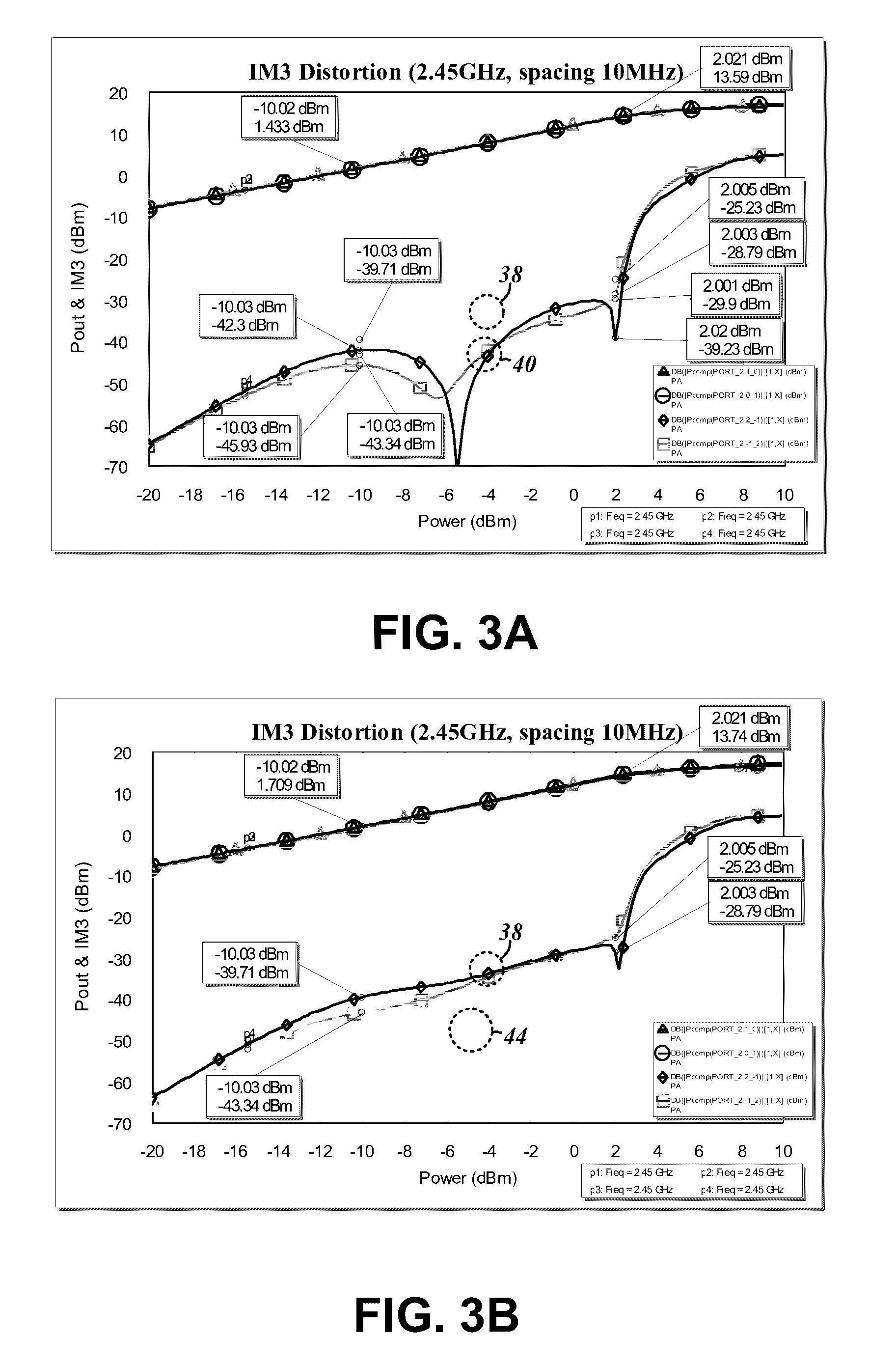RF power amplifiers with diode linearizer
a technology of power amplifiers and linearizers, applied in the direction of rf amplifiers, amplifier modifications to reduce non-linear distortion, negative-feedback circuit arrangements, etc., can solve the problems of non-linear performance of high-efficiency rf power amplifiers such as inverse class f, class e, and doherty amplifiers, and achieve the effect of reducing inter-modulation products
- Summary
- Abstract
- Description
- Claims
- Application Information
AI Technical Summary
Benefits of technology
Problems solved by technology
Method used
Image
Examples
first embodiment
[0045]The graph of FIG. 3B likewise plots the simulated IM3 distortion at the 2.4 GHz ISM frequency for the RF power amplifier circuit 10a. However, different size diodes were simulated, in particular, relative areas of 0.15, 0.2, and 0.25. The first graph plot 38 shows the IM3 products without the diode linearizer circuit 12a, and a second plot 44 shows the reduced IM3 products with the aforementioned differently sized diodes.
[0046]FIG. 4 is a schematic diagram of a second embodiment of the RF power amplifier circuit 10b including a second embodiment of the diode linearizer circuit 12b. Because the basic components of the RF power amplifier circuit 10b, that is, the single stage amplifier transistor M1, along with the input matching circuit, output matching circuit, the control voltage circuit, and the bias circuit are the same as in the first embodiment of the RF power amplifier circuit 10a, the details thereof will not be repeated for the sake of brevity.
second embodiment
[0047]The source terminal 18s of the transistor M1 is similarly connected to the inductor L3, along with the first diode D1 that is connected in series with the inductor L8 to ground. Additionally, however, the diode linearizer circuit 12b includes a second diode D2 that is connected in anti-parallel to the first diode D1. The anode 32a of the first diode D1 is connected to the source terminal 18s (and also connected to the body terminal 18b), while the cathode 32c of the first diode D1 is connected to the inductor L8. An anode 46a of the second diode D2 is connected to the cathode 32c of the first diode D1 and the inductor L8. A cathode 46c of the second diode D2 is connected to the anode 32a of the first diode, and the source terminal 18s of the transistor M1. Again, no direct current bias voltage is connected to the first diode D1 or the second diode D2.
[0048]The RF current through the source terminal 18s of the transistor M1 passes through a parallel circuit of the inductor L3 i...
fourth embodiment
[0059]The source terminal 18s of the transistor M1 is connected to the inductor L3, along with the first diode D1 that is connected in series with the inductor L8 to ground. In comparison to the previously described embodiments that included the second diode D2, in the diode linearizer circuit 12d, an alternative configuration is contemplated. Specifically, the second diode D2, that is, the cathode 46c thereof, is connected to the gate terminal 18g of the transistor M1. Thus, the direct current bias voltage V1 is applied to the cathode 46c of the second diode D2. As noted above, the input matching circuit 20, which is comprised of the capacitor C1, the capacitor C2, the inductor L1, and the inductor L2, is tuned to impedance match the gate terminal 18g of the transistor M1 to the RF signal source that is connected to the input port 14. With the introduction of the second diode D2 as a direct connection to the input port 14, according to certain embodiments of the present disclosure,...
PUM
 Login to View More
Login to View More Abstract
Description
Claims
Application Information
 Login to View More
Login to View More - R&D
- Intellectual Property
- Life Sciences
- Materials
- Tech Scout
- Unparalleled Data Quality
- Higher Quality Content
- 60% Fewer Hallucinations
Browse by: Latest US Patents, China's latest patents, Technical Efficacy Thesaurus, Application Domain, Technology Topic, Popular Technical Reports.
© 2025 PatSnap. All rights reserved.Legal|Privacy policy|Modern Slavery Act Transparency Statement|Sitemap|About US| Contact US: help@patsnap.com



